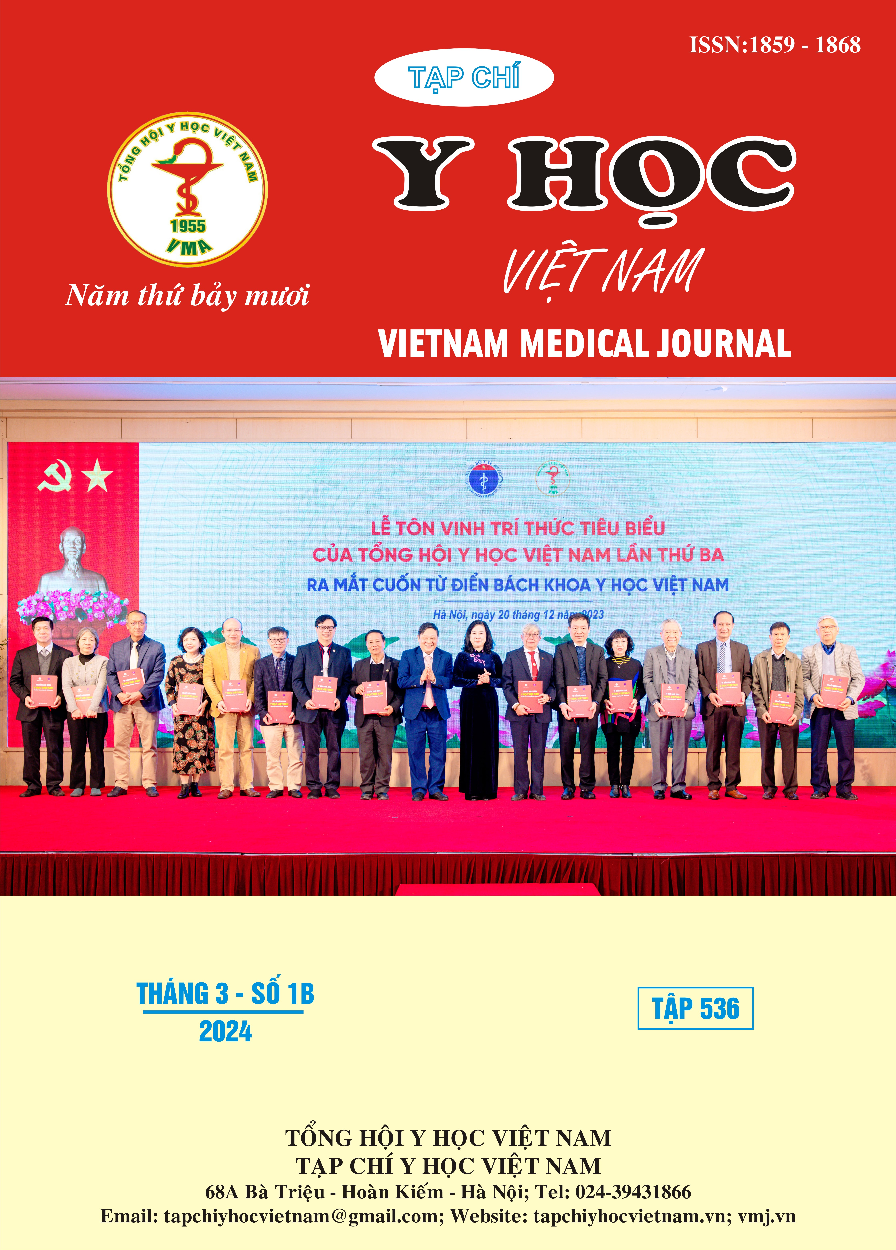RELATIONSHIP BETWEEN DERMATOPHYTE SPECIES CAUSING TINEA CAPITIS AND SOME CLINICAL FACTORS
Main Article Content
Abstract
Objectives: Assessing the relationship between dermatophyte species causing tinea capitis and some clinical factors. Method: A descriptive cross-sectional study was conducted in 43 patients who were diagnosed with tinea capitis at the National hospital of Dermatology and Venereology from January 2021 to December 2021. Results: Five species of dermatophyte causing tinea capitis have been identified. T. tonsurans was the most common fungal isolate (51,1%), followed by M. canis (26,7%). The majority of patients were from 6 to 16 years old with T. tonsurans and M. canis; the age group of over 16 years only found T. tonsurans. Most of T. tonsurans caused non-inflammatory lesions with black spots; M. canis did not usually cause black dots. There were no significant differences between Dermatophytes species and clinical characteristics and age. Conclusions: Tinea capitis predominantly affects the pediatric population with T. tonsurans and M. canis were the most common fungal isolate. There was no association between Dermatophytes species and age and clinical characteristics.
Article Details
References
2. Bitew, A., Dermatophytosis: Prevalence of Dermatophytes and Non-Dermatophyte Fungi from Patients Attending Arsho Advanced Medical Laboratory, Addis Ababa, Ethiopia. Dermatol Res Pract, 2018. 2018: p. 1-6.
3. Lee, H.J., et al., Analysis of Adult Patients with Tinea Capitis in Southeastern Korea. Ann Dermatol, 2020. 32(2): p. 109-114.
4. Reyes, I., D. Vega, and L. Arriaga, Kerion celsi caused by microsporum gypseum: report of two cases and review. J Dermat Cosmetol, 2018. 2(3): p. 151-157.
5. Sombatmaithai, A., et al., Tinea capitis caused by Trichophyton tonsurans presenting as an obscure patchy hair loss due to daily antifungal shampoo use. Dermatol Pract Concept, 2015. 5(2): p. 133-5.
6. Peixoto, R., et al., Tinea Capitis: Correlation of Clinical Aspects, Findings on Direct Mycological Examination, and Agents Isolated from Fungal Culture. Int J Trichology, 2019. 11(6): p. 232-235.
7. Dinulos, J.G., Habif'Clinical Dermatology E-Book. 2019: Elsevier Health Sciences.
8. Patterson, J.W., Weedon's skin pathology E-book. 2014: Elsevier Health Sciences.
9. Yang, X., et al., First report of kerion (tinea capitis) caused by combined Trichophyton mentagrophytes and Microsporum canis. Medical Mycology Case Reports, 2020. 29: p. 5-7.


